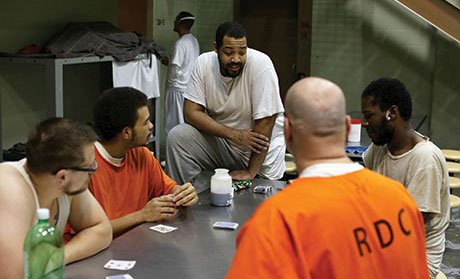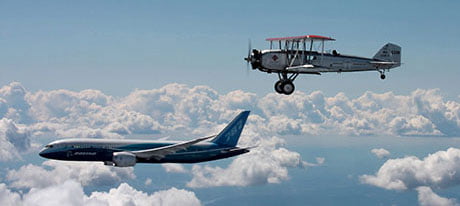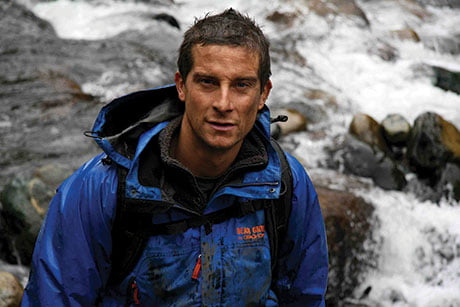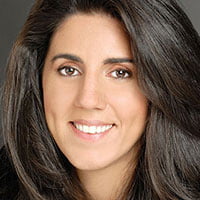States of reality
Posted By Clive Whittingham On 24-02-2017 @ 11:55 am In Features | Comments Disabled
With drama too expensive for many cablenets and SVoD players taking their audience, unscripted and reality are growing in importance in the US. The problem is paying for it, writes Clive Whittingham.

John Ford
While the television buzz has swarmed around drama for several years, the unscripted business in the US is growing in importance.
With cord-cutting, skinny bundles and economic factors reducing cable subscriptions from north of 100 million to closer to 90 million, the cable networks are facing a fall in revenue.
“Reality is still a very strong genre, much needed by the cablenets,” says John Ford, general manager of the US-based Non-Fiction Producers Association. “The cost of reality ranges from US$250,000 an hour up to US$550,000, but that pales into insignificance when compared to drama, where the price of admission is US$2.5m an hour. You can make big bets on drama but reality keeps the lights on.”
There are also factors other than the bottom line in play. The shift away from procedurals in favour of serialised drama has killed the repeats business. Matt Gould, executive VP of the US branch of UK producers’ association Pact, says: “Repeats used to get 50% of the rating of the premiere; now it’s probably closer to 10%. There are more opportunities than ever for producers.”
But as Gould admits, it’s harder than ever to get a show away. With declining subscriptions and increased competition comes budget pressures, and original programming is the biggest overhead cablenets have.

Matt Gould
“The cost of making high-quality programming is not 10% less than five years ago, in fact it’s higher because labour costs go up and so on,” Ford says. “Having worked as a network commissioner at Discovery, saving 5% on the budget but reducing the quality of the show and its chances of being a hit isn’t a smart move because hits keep you in the job. You also need a robust creative community where hundreds of companies are out there developing ideas for you for free.”
This is a sentiment echoed by Arthur Smith, CEO of LA prodco A Smith & Co, which produces Hell’s Kitchen for Fox, American Ninja Warrior for NBC and Esquire, among other shows.
“If budgets are spread too thin, the resulting product can be inferior, and the investment is wasted because the project’s potential wasn’t maximised and, as a result, flopped,” Smith says.
“The cable and broadcast communities realise that good programming costs what it costs, and skimping on that can prevent a producer from making the programme the best it can be. It’s somewhat counterintuitive, but being cheap and frugal can end up being expensive.”
This is particularly true as one of the trends seems to be towards higher-end, documentary-style reality shows. Prison-themed 60 Days In has made big waves on A&E, for example.

60 Days In on A&E looks at life behind bars
“There’s more demand for high-cost, blue-chip than I’ve seen for a long time,” says Gould at Pact US. “Companies that specialise in that are booming – Jigsaw, Warrior Poets, Part Two Pictures. Broadcasters and producers are finding new revenue models – Discovery partnered with Boeing on The Age of Aerospace. Something we’re pushing our members to thinking about is international-first content. When the terms of trade came into being in the UK in 2003, factual programming there changed from documentary style to more formatted. I believe something similar is happening here.”
John Pollak, president of Electus International, says the belt-tightening has actually helped the pitching process. “The buyers are more targeted in what they’re looking for,” he says. “A couple of years ago, when reality was at its height, everything was working so everybody was trying everything – docusoap, scripted formats, gameshows.
“Broadcasters now have a much clearer idea of what they want, which makes the development and pitching process more streamlined.”
But according to Jeff Collins, founder of Collins Avenue (Dance Moms, Stove Tots): “It has never been more difficult.

Discovery partnered with plane manufacturer Boeing on The Age of Aerospace
“We are at a point now where broadcasters look to me as a company owner to roll in a portion of my fee. The business model is extremely difficult to work when it’s nothing more than a fee-based business in the first place. There are so many costs that come out of my profit – we spend more money than ever in development.”
So does the increasing importance of reality and unscripted, allied with cablenets’ declining ability to cover the costs, mean they’re open to leaving some programming rights with the producers – a given in the UK under the terms of trade but often a pipe dream in the US.
“Absolutely not,” says Collins. “Networks are more aggressive than ever on rights. Even the few that are open to the conversation, by the time you factor in what they’re looking for in terms of the prodco offsetting the budget, it’s not worth it. You’d make more from the small piece of back-end they offer than if you found a distributor yourself. It’s a fool’s errand.”
Needless to say, this is not an opinion shared by Gould at Pact. The producers’ association played a key role in lobbying the UK government for the terms, which formed part of the Communications Act 2003.
“Rights are not a pipe dream; it’s one of our main missions at Pact US,” he says. “If repeats don’t work and at the same time broadcasters say they want bigger and better shows… their budgets aren’t getting bigger. Viewers want blue-chip stuff and fresh content, so they may have to do it. Broadcasters that were never previously willing to discuss rights are relaxing their position in the US.”

Running Wild with Bear Grylls on NBC
Pollak says Electus has tactics to hold on to its programmes. “We’re not really looking to deficit finance every production we’re doing any more,” he says. “By bringing a brand, a format or a big piece of talent it’s really helped us to hold on to rights in a lot of cases. Running Wild with Bear Grylls on NBC is a prime example. With some broadcasters it’s not going to happen but with a lot there is always a conversation and a format or talent can really help.”
So is this big SVoD streaming monster that’s chomping bits out of cable’s revenue interested in unscripted itself? Netflix’s Making a Murderer and Amazon’s record-breaking launch of The Grand Tour suggests so.
Elli Hakami, who set up Talos Pictures in New York with fellow former MTV exec Julian P Hobbs in 2016, says her firm is pitching to the streamers and she expects the programmes that come out of it to look very different to cable and broadcast series.
“It goes back to the promise of a premium brand to its viewer when looking for a subscription,” Hakami says. “When a viewer is going to sit and watch something commercial-free and binge-watch for three hours you have to wrap your head around that and say this is being viewed very differently, and therefore the content should respond to that. Great stories, great characters and unknown worlds always win but you can slow it right down.

Elli Hakami
“I’m not saying SVoD is this new shiny thing and broadcast is the ugly older brother – you can make shows that feel premium for both – but the nature of the different ways the viewer approaches the two platforms definitely does have an impact.”
And what of the shock political results of 2016? Those working in the media seemed to be caught on the hop by both Brexit and Donald Trump’s presidential success. So do they exist in a bubble? And does this mean there’s a huge audience out there waiting to be programmed for?
Most producers C21 has spoken to say it was the news channels that faced the most stark inward reflection, while others point to series such as Duck Dynasty. But Collins goes further.
“We do exist in a media bubble,” he says. “As a programme maker I take it very seriously, I follow politics intensely. I do believe there is a segment of the population we have been missing with our programmes. I grew up in the South, in a red state that went for Trump, surrounded by working class folk who don’t have a college education. We have to be mindful of what they want to see on TV.
“My view is they want to see stories about people like them, who win. Channels like History have always been keen to tell stories about men who are able to go out into the wilderness and use their hands to scratch out a living that doesn’t involve being part of the system. Well, we’ve done that, we’ve had that fantasy, how do we bring that home? How do we find stories about guys who are part of the system, who aren’t living in Alaska but who are winning. That will be the trend for 2017.”
So, it’s an increasingly important genre for belt-tightening cablenets, and another area of expansion for the all-conquering SVoD players, which means there are more unscripted buyers than ever before. There’s also, it seems, a huge but under-served portion of the US to target with programming. But it’s going to require clever business models from the producers, and who knows, maybe some rights concession from the networks to do it.
Article printed from C21Media: https://www.c21media.net
URL to article: https://www.c21media.net/states-of-reality/
Click here to print.